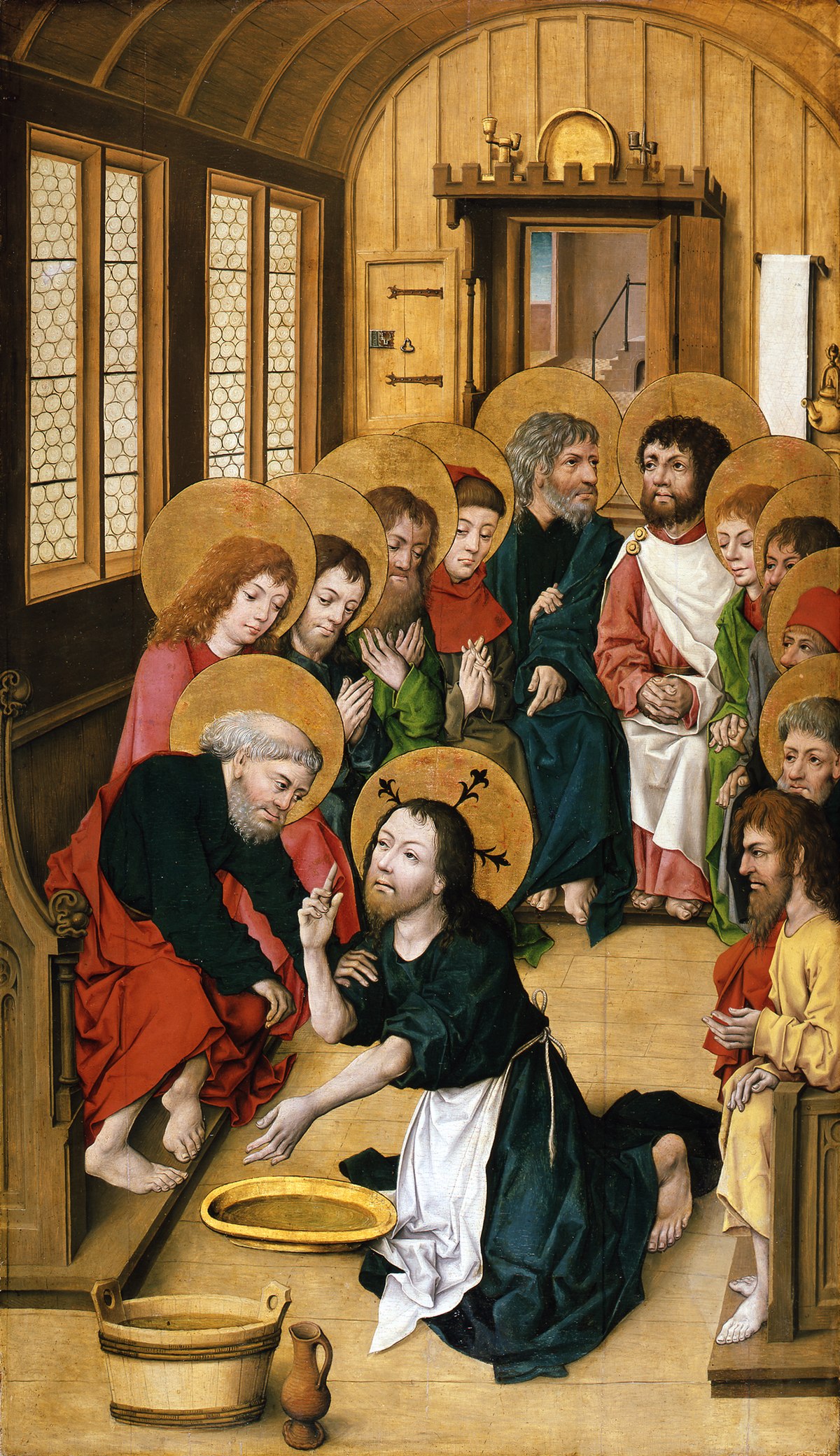The first reading (Isaiah 42:1-7) describes Jesus as
the servant of his Father for His will for us, while the Gospel reading (John
12:1-11) gives a picture of Mary, sister of Martha and Lazarus, as a servant
for Jesus in her hospitality, while the evil forces are in full swing to find
and arrest Jesus.
“Here is my
servant whom I uphold, my chosen one with whom I am pleased”, says God
(Isaiah 42:1) on His only begotten Son, whom He sent to us out of His love for
us (cf. John 3:16). How do we know that God is speaking of His Son here? Matthew
explains that Jesus’ public ministry, as a service, is not just for the Jews
but also for the Gentiles, to fulfill Isaiah 42:1-4, in Matthew 12:15-21. “The coast lands will wait for his teaching”(Isaiah
42:4) is a prophecy of Isaiah to tell that the service mission of Jesus will be
extended to the coast lands, namely, the Gentile nations on the coasts of the
Mediterranean Sea, as Matthew puts this with these words, “And in his name the Gentiles will hope”(Matthew 12;21).
Remember, God the Father said, “This is my beloved Son, with whom I am well pleased”(Matthew 3:17),
“You are my beloved Son; with you I am well pleased”(Mark 1:11//Luke 3:22),
evoking Psalm 2:7.
This is God’s acknowledgement and proclamation that
Jesus is His beloved Son and that this beloved Son of His will fulfill His
salvific mission, as He anoints his servant Son with the Holy Spirit. This is
reflected in Isaiah 11:2; 42:1; 61:1, for example. This intention of God for
His Son, Jesus, to be anointed with the Holy Spirit was also implicated at the
time of Annunciation, as well, (Luke 1:31-33, 35), in order to fulfill Isaiah
42:4, letting His justice rule all over the world through the service of His
servant Son. To be an integral part of this God’s salvific scheme, Mary the
Blessed Virgin, consented to serve Him as the Theotokos (Luke 1:38).
On behalf of his Father, anointed and filled with
the Holy Spirit, this beloved servant Son, Christ Jesus, serves us with
uncompromising strength and humility (Isaiah 42:2) , even being beaten and
wounded, until the mission of the Father, for whom he serves, is completed
(Isaiah 42:3-4). In the meantime, through his service mission, the Holy Spirit
is breathed into people (Isaiah 42:5) for a new covenant (Isaiah 42:6), through
which restoration and deliverance take place to shine the new light (Isaiah
42:7).
The beloved servant Son of God, filled with the Holy
Spirit, Jesus the Christ, is now about to complete his portion of mission in
Jerusalem, as reflected through Holy Week. He has entered Jerusalem, as its
people welcomed him as the Messiah King, waving palms and shouting to him, “Hosanna to the Son of David! Blessed is He
who comes in the name of the Lord! Hosanna in the highest!” (Matthew 21:9),
citing Psalm 118:25, in light of Zechariah 9:9.
Now, he stops by the house of his friends, Martha, Mary, and Lazarus, in
Bethany, as today’s Gospel reading (John 12:1-11) describes.
Jesus just raised Lazarus from the dead as his
seventh sign (John 11:1-44), resulting in further intensification of the
persecutors’ determination to get rid of him (John 11:45-57). And, the Gospel
Passion narrative read yesterday, Palm Sunday of the Lord’s Passion (Matthew
26:14-27:66 – Cycle A) describes how the intensified persecutors’ determination
resulted in arresting and killing him and how Jesus, as the beloved servant Son
of God, responded through his Passion and death on the Cross. In fact, the
first reading for Passion Sunday (Isaiah 50:4-7) reflects Isaiah 42:3-4 in
today’s first reading.
Jesus is fully aware what is ahead of him in Jerusalem. He is aware that the persecutors have been trying to catch him. He knows that raising Lazarus from the dead has prompted the persecutors’ desire to catch and kill him to the highest level. So he wanted to visit his close friends in Bethany, Martha, Mary, and Lazarus, before he faces the arrest, torture, trial, and death.
Here at the house of Martha, Mary, and Lazarus, it is Martha, serving dinner to him (John 12:2), as it was so before (Luke 10:38-42). But, it was Mary, who anointed Jesus with costly perfumed oil made from genuine aromatic nard and wiped him with her hair (John 12:3). Both Martha and Mary served the beloved servant Son of God. And, dinner by Martha and anointing by Mary sequence is also reflected in Last Supper, which is with the Institution of the Holy Eucharist at the Passover Seder hosted by Jesus (Matthew 26:17-30//Mark14:12–26//Luke 22:7–39) and Jesus serving his disciples as he washes their feet (John 13:1-7) to teach love (John 13:34-35).

It is believed that the expensive perfumed oil that
Mary used to anoint Jesus six days before his death on Passover (John 12:3) was
implicated by the myrrh brought to him by the Magi when he was still an infant (Matthew
2:11). And, after his death on the Cross, his corpse was again treated with
myrrh that Nicodemus brought (John 19:39).
Before Mary serving the servant Son of God by
anointing him, the Magi served him with myrrh, along with gold and frankincense,
and Nicodemus and Joseph of Arimathea served him after his death with myrrh and
burial.
Those who serve the beloved servant of God, Jesus,
like Mary, are also God’s beloved servants. Though it costs them personally,
servants remain willing and determined to serve faithfully and loyally.
Together with the beloved servant Son of God, we, the beloved servants of God,
remain on our mission, in our service to God, until His will is done on earth
as it is in heaven. Nothing can stop us from our servant commitment, though it
may cost our own lives with our cross.

No comments:
Post a Comment